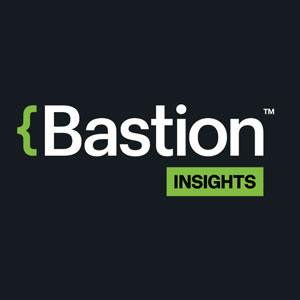
Posted on: December 10, 2020
by Chris Hubble, CEO at Bastion db5
When you think of field research, you might think of an archeologist bent over a dig site investigating civilizations from the past, excavating the terrain, and sifting out important artifacts. In marketing, field research is also about the study of the human experience and uncovering those important pieces of knowledge—but as they pertain to your business. Field research can give you insights into your customers’ pain points, what they need to solve their problems, their thoughts on how your product helps, or even where they feel your services might be improved. Through field research, business owners can learn what makes their customers tick, and use that information to capitalize on previously untapped sales opportunities.
Types of field research
There are a couple of types of field research and they each provide a unique snapshot of the customer experience. When determining if your business wants to invest in field research, it’s important to decide what types of data points your company would be seeking so that you can pick the market research tactic that best fits your needs.
Qualitative data – This type of market research is observational. You can conduct qualitative data through focus groups, in-store customer surveys and in-depth personal interviews. Qualitative data is often collected one-on-one or within small groups. It is an open structure and allows customers to describe their thoughts directly to another person and for the researcher to pose follow-up questions to further explore specific topics of discussion. The data collected from multiple customers is then reviewed and key insights are extracted.
Quantitative data – This type of market research is numerical and accounts for approximately 79 percent of the market research conducted in the US. You can gain quantitative data through online surveys, online journaling, social listening or structured panels. This type of research often utilizes a set of standardized questions with a numerical or agree level scale which can then be manipulated into generalizations and forecasts. These data sets are easily translated into charts and graphs, providing a visual representation that many businesses find helpful. While it does allow for a larger data sample to be collected, researchers might not get deeper insights or “the why” that they would with qualitative data.
Field research put to work
Many companies have used field research to identify previously untapped sales opportunities. Here are a couple examples of how field research has helped notable businesses grow:
LEGO – In 2011, the colorful brick company known for construction sets wanted to tap into a previously missed market and determined that qualitative data would help them get there. While boys around the world were LEGO fans, girls weren’t passionate about the brand. In order to learn more about the girls’ toy market, LEGO sent out researchers to observe how girls play, and then developed a new line based on the data collected. In 2012, “LEGO Friends” launched in order to capture a new market and increase LEGO’s sales potential.
Starbucks – The coffee giant is known for innovative, on-trend coffee offerings and often uses quantitative data to expand their menu. One of the ways they stay on top of the market is through their My Starbucks Idea platform. This allows both customers and employees to submit ideas to the company. Starbucks used this digital feedback and monitored market trends before deciding to launch dairy-free milk alternatives in the store. Now, coffee lovers who prefer dairy-free options can purchase their afternoon pick-me-up at their local Starbucks, expanding the market to include those with dairy allergies, those who consciously choose to avoid dairy, and those who simply prefer the taste of the non-dairy option.
Can you dig it?
Field research is an incredibly helpful tool that can be used to gain important insights into your business. By connecting directly with customers, you may uncover additional sales opportunities—allowing your business to capitalize on these previously untapped prospects. Choosing the right type of research is important. Qualitative tactics will provide a full picture with in-depth stories from a select few of your customers, while quantitative tactics can provide a larger data set—though perhaps not as detailed. Both are viable options; it just depends on the type of information your business needs in order to find your new niche and capture additional sales.
Chris Hubble serves as CEO of market research and consumer insights agency Bastion db5. Before founding db5 in 2009, Chris served as Chief Executive Officer at Hall & Partners USA. Chris has 30+ years of experience in consumer insights with particular expertise in new product development, brand strategy, brand communications, and customer experience. He’s worked with over 50% of Fortune 500 clients. Bastion db5 has done work for Yahoo!, Verizon Media, and BuzzFeed.
